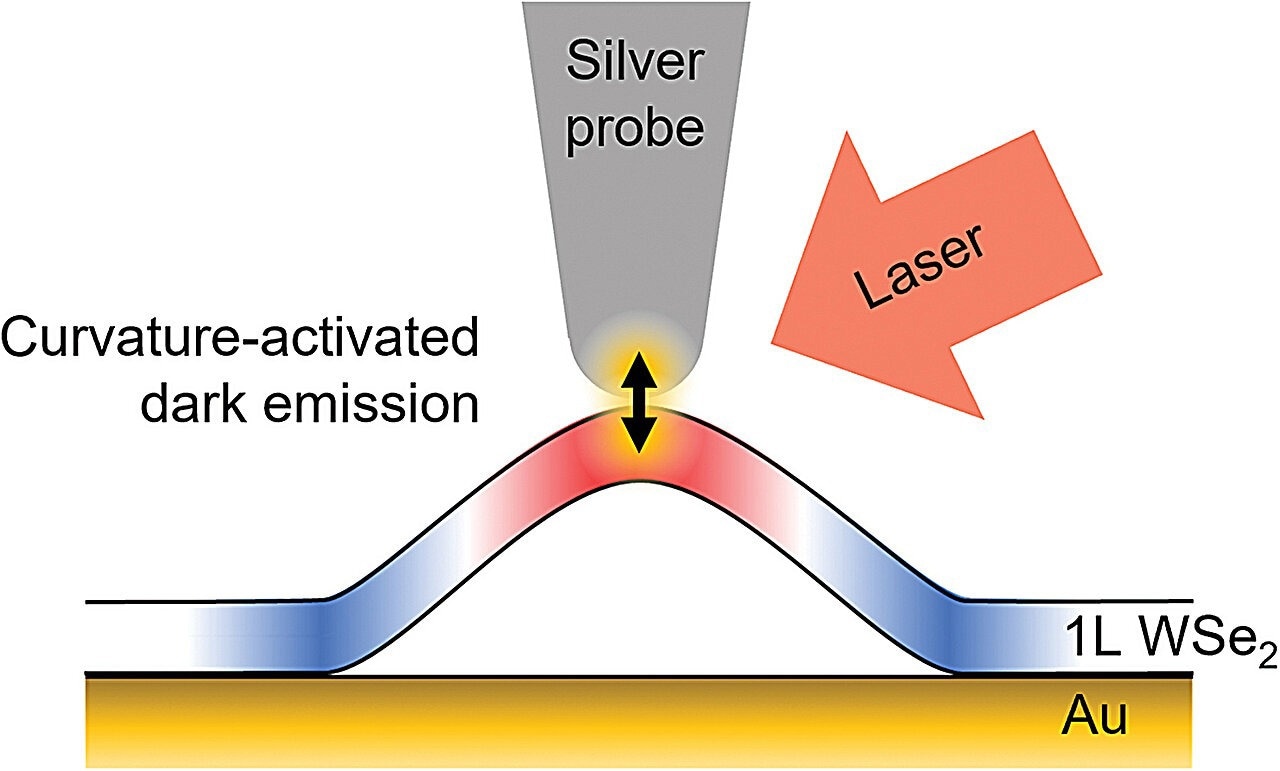The National Physical Laboratory (NPL) discovered that bending tungsten diselenide, instead of stretching it, induces localized emission in semiconductor 2D materials, offering new opportunities for quantum technologies; findings were published in Science and Technology of Advanced Materials.

Credit: Science and Technology of Advanced Materials (2023). DOI: 10.1080/14686996.2023.2278443
Semiconductor 2D materials are a few atoms thick, and some of them exhibit localized emission, which occurs when light is emitted from a tiny portion of the layer, producing just one photon at a time. This localized emission has distinct features and is critical to emerging quantum technologies, particularly in optoelectronic and quantum device applications.
Stretching a 2D material called tungsten diselenide has been demonstrated in research to result in localized emission; hence, various efforts have been made to build nanostructures with the highest strain in the layer. However, improved studies at the National Physical Laboratory (NPL) show that bending the material could have an equivalent impact.
Scientists at NPL suggest that a better approach to engineering the qualities is to use the curvature of the 2D material, which is caused by creases in the 2D layer, in a recently published study.
Although the effects of bending and stretching are not always easily distinguished, their results demonstrate that this alternative paradigm offers a possible path toward room-temperature quantum light sources by combining sophisticated measurement techniques.
Since curvature is considerably easier to construct than stretching strain, this finding could accelerate the development of affordable quantum technology.
NPL is presently doing quantum chemical modeling and further experimental work in collaboration with labs in the UK and Brazil to evaluate the suggested paradigm and advance the theoretical understanding of how geometric curvature causes localized emission in monolayer tungsten diselenide.
This work is a great example of how bringing together teams with expertise in different areas of materials and measurement science has resulted in a new way of understanding localized emission in advanced 2D materials semiconductors, opening new opportunities for optoelectronics and quantum applications.
Fernando Castro, Professor and Head, Department of Science, National Physical Laboratory
Sebastian Wood, Tom Vincent, Vivian Tong, Alessandro Catanzaro, Yameng Cao, and Olga Kazakova are the members of NPL’s science team working on this study.
Journal Reference:
Wood, S., et. al. (2024) Curvature-enhanced localised emission from dark states in wrinkled monolayer WSe2 at room temperature. Science and Technology of Advanced Materials. doi:10.1080/14686996.2023.2278443.